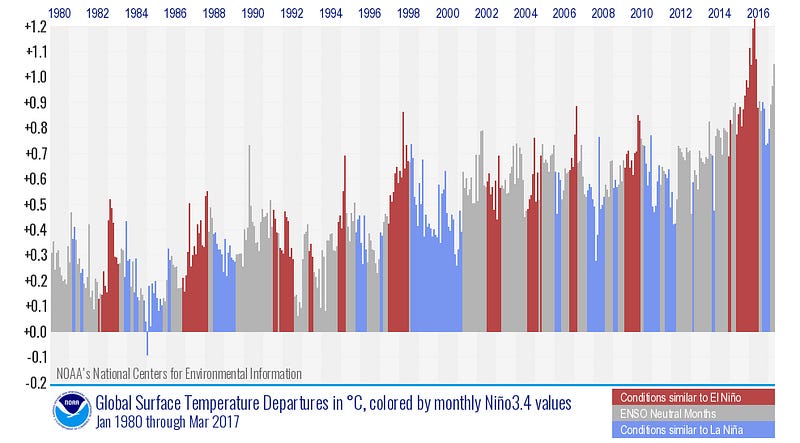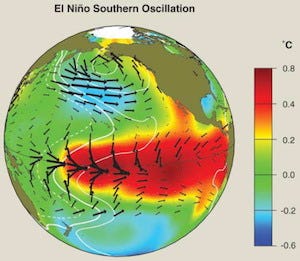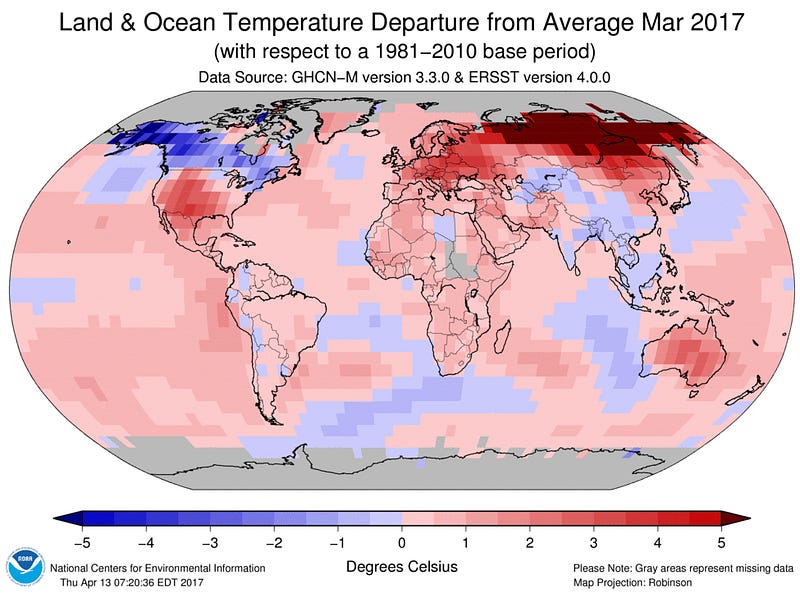First time any month was more than 1.8°F warmer than normal “in the absence of an El Niño episode.”
The National Oceanic and Atmospheric Administration (NOAA) reported that last month set an unusual and unexpected new record for global warming.
No month before March 2017 had ever exceeded the “normal” temperature (the 1981–2010 average) by a full 1.8°F (1.0°C) — “in the absence of an El Niño episode in the tropical Pacific Ocean.”
Why does this matter?
An El Niño is “characterized byunusually warm ocean temperatures in the Equatorial Pacific.” El Niños generally lead to global temperature records, as the short-term El Niño warming adds to the underlying long-term global warming trend (see top chart).
So when a month sees record high global temperatures in the absence of an El Niño, that is a sign the underlying global warming trend is stronger than ever.
NOAA reports that both March and the year to date (January through March) were the “second warmest on record” for the world since global temperature records began in 1880. They were second only to 2016 which, of course, was a year marked by a major El Niño.
Significantly, both March and Janurary-March 2017 beat their 2015 counterparts easily — even though all of 2015 had El Niño conditions.
It was especially hot last month in the Siberian permafrost, as we reportedearlier this week.
NOAA doesn’t calculate temperatures at the poles, as NASA does. But NOAA did report that for both the Arctic and Antarctic, “this was the smallest March sea ice extent since the satellite record began in 1979.”
Bottom line: Human-caused global warming continues at a dangerous pace, and only human action to slash carbon pollution can stop it.














Đăng nhận xét